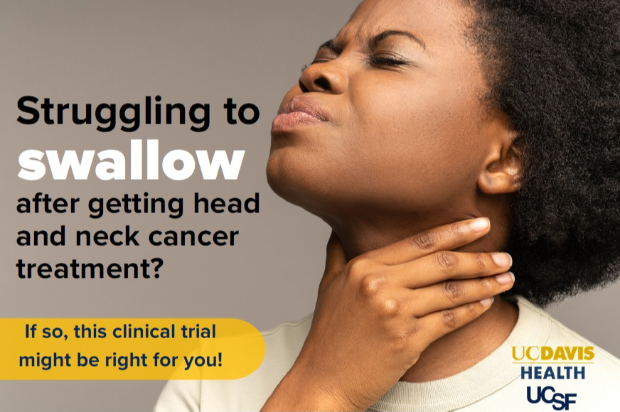Parotidectomy is the removal of part or all of the parotid gland on one side of the face.
The parotid glands are the largest salivary glands, but the patient should not experience dry mouth after removal of just one parotid gland, as there are multiple other major and minor salivary glands which will maintain saliva production. Parotidectomies are done via an incision just in front of the ear that extends down into a natural skin crease in the neck. This allows the surgeon to hide the scar as much as possible.
The most critical part of any parotid surgery is finding the facial nerve (CN VII) which is the cranial nerve that controls the movement of half of the face. The facial nerve begins as a single nerve trunk where it exits the skull just below the ear but then splits into multiple branches as it travels through the middle of the parotid gland.
Each of these branches control a different facial muscle that allow for facial movement and expression. The plane at which the facial nerve divides the parotid gland is used to delineate the superficial and deep lobes of the gland.
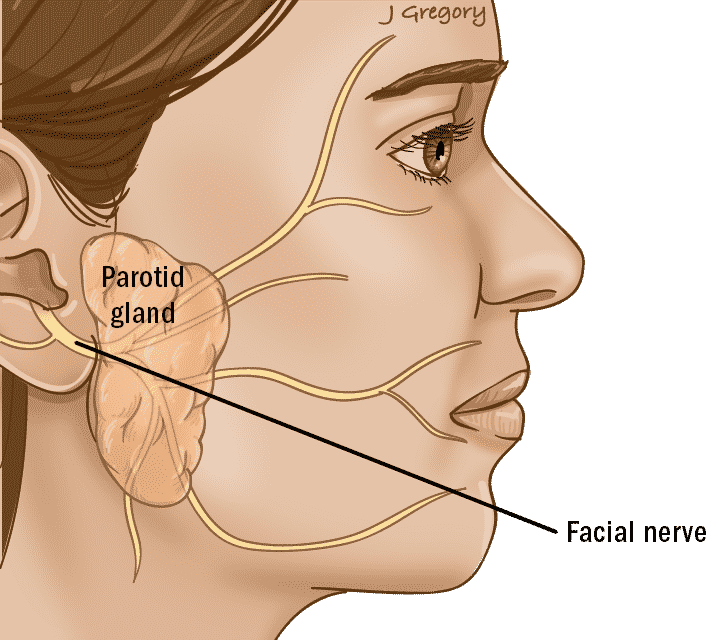
Types of Parotidectomy
Superficial Parotidectomy
Superficial parotidectomy is the most common type of parotid surgery. A superficial parotidectomy refers to the removal of the parotid gland superficial to the plane of the facial nerve. Sometimes a “partial” superficial parotidectomy will be performed for small benign tumors that only involve a portion of the superficial lobe.
Total Parotidectomy
This is the removal of the entire parotid gland, including the superficial and deep lobes. The facial nerve is located and preserved during this operation; however, this requires significant dissection and will result in increased risk of temporary facial weakness compared to a superficial parotidectomy.
Radical Parotidectomy
This is a total parotidectomy that also involves resection of the facial nerve. A radical parotidectomy is performed when the facial nerve is involved with cancer and often the face is weak or paralyzed prior to surgery.
In some cases, additional procedures, such as a neck dissection, a facial nerve graft, or facial reanimation might be done at the same time as the parotidectomy. The surgeon will discuss these associated procedures with the patient prior to the surgery.
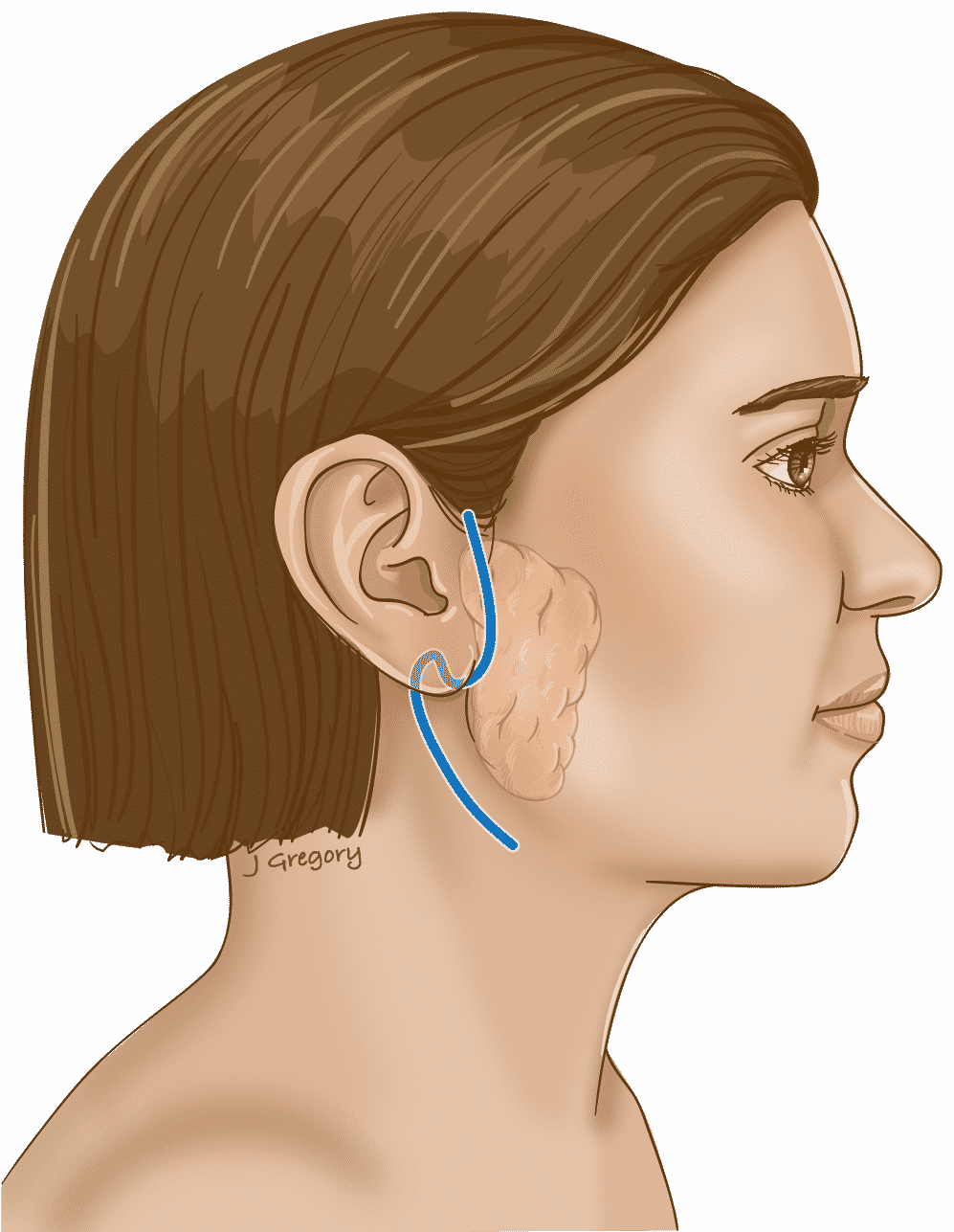
What You Can Expect
Before Surgery
You will receive specific instructions from your physician regarding how to prepare for surgery. In general, after midnight the night before surgery, you should not eat or drink anything, except essential medications. On the day of surgery, you will arrive at the hospital several hours before the operation and check in with nurses and anesthesiologists. If you have any last minute questions, this is a good time to ask them.
The Surgery
The patient will be put completely to sleep with general anesthesia for this procedure. In some cases, the surgeon might choose to use a special facial nerve monitor that makes a noise when the facial nerve is stimulated.
At the end of the procedure, the surgeon might place a small, temporary drain coming out of the skin to remove any fluid and/or blood that accumulates in the space where the surgery was performed. This drain will be removed by the surgical team within 1-2 days.
Recovery & Aftercare
Depending on the extent of the surgery and the doctor’s determination, you may be able to leave the hospital several hours after surgery or up to a week after surgery. You should be able to drink and eat soon after surgery. Pain associated with this surgery is usually very mild.
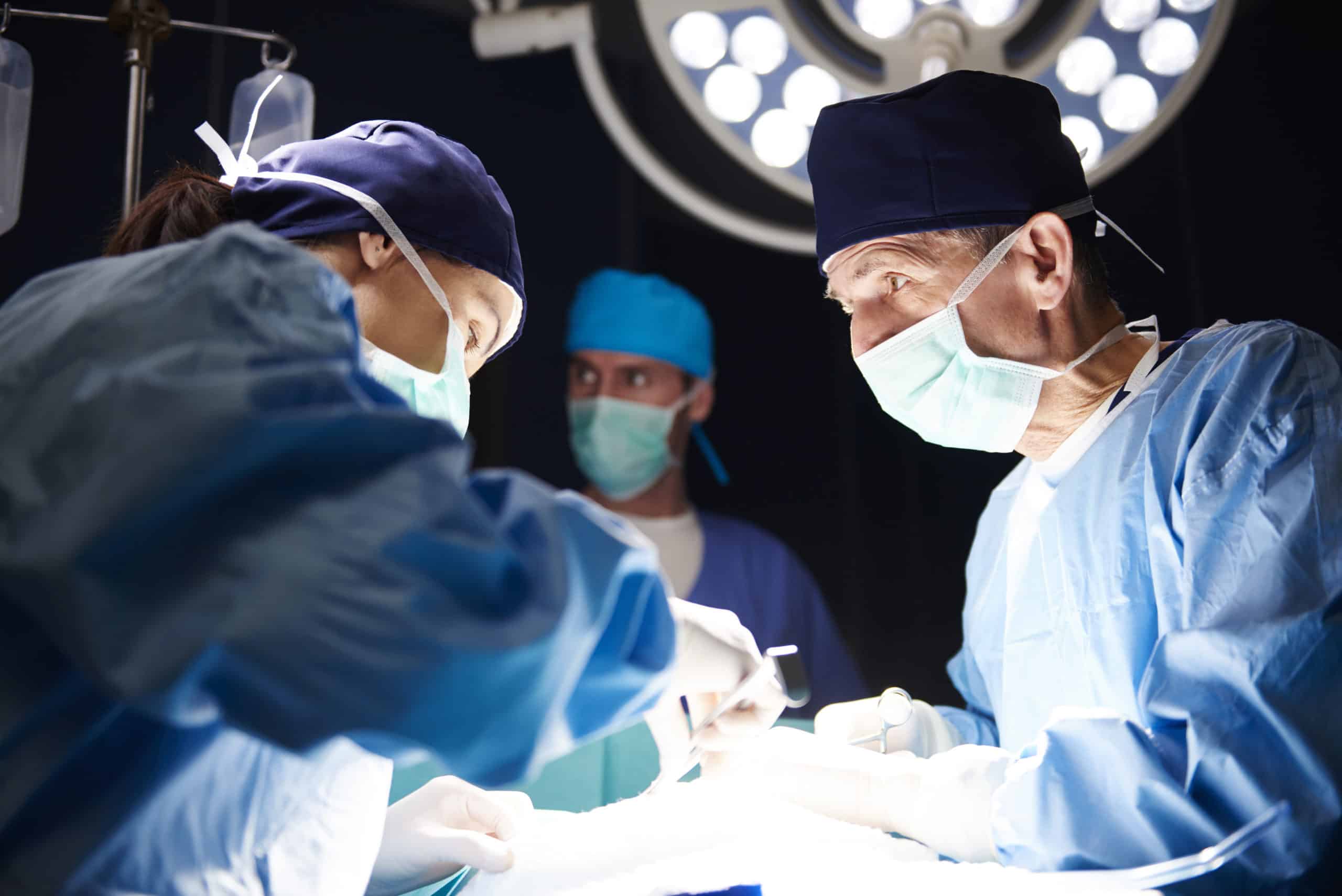
Download This Section
Feel free to download and print this page.
It’s free for personal use and to share with others you think might benefit from the information provided.
Risks of Parotidectomy
- Bleeding (including Hematoma)
If significant bleeding occurs after the operation, you may be taken back to the operating room to stop the bleeding. Mild bleeding or blood collections under the skin (hematomas) can occur. - Seroma
This is a collection of normal body fluid in the neck that occurs after a surgical drain is removed. This can be treated with observation, as the body will usually resorb it, or repeated needle aspiration to drain the fluid. - Infection
With any surgical procedure, there is a risk of an infection. This might require antibiotics and/or drainage of the infection. - Sialocele
Collection of saliva under the skin near the surgical site may either slowly resolve without treatment or require additional drainage. - Ear Numbness
Decreased sensation of the ear and skin of the neck/face may occur. This area of numbness will shrink over time, but the ear lobe may remain numb. - Frey’s Syndrome (“Gustatory Sweating”)
Sweating on the side of the face during eating may occur because upon removal of the parotid gland, the nerves that normally stimulate saliva secretion can innervate sweat glands instead. Treatment involves applying antiperspirant, injecting Botox, placing a barrier under the skin, or middle ear surgery to cut the nerve that causes gustatory sweating. It is typically rare to develop Frey’s syndrome after a parotidectomy. - Facial Nerve Injury
While usually temporary, permanent damage to the facial nerve may occur if one of the facial nerve branches are unintentionally cut or intentionally sacrificed during surgery. For superficial and total parotidectomies, the likelihood of this occurring is rare, especially with facial nerve monitoring. Be sure to ask your care team if they take these protective measures and are experienced with this procedure. - First Bite Syndrome
First Bite Syndrome is characteristic of cramping sensation or sharp pain that occurs in the parotid region while chewing. The pain improves with subsequent bites.
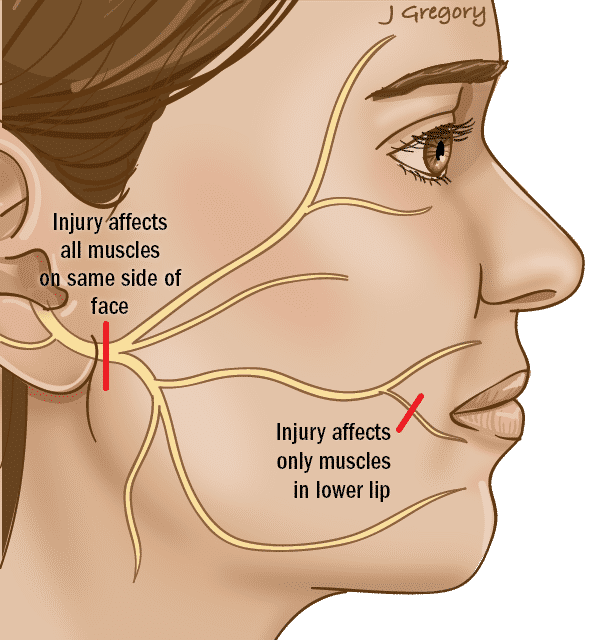

Top Questions for Your Doctor
Access our list of the most important questions to ask your physician at your next appointment.

